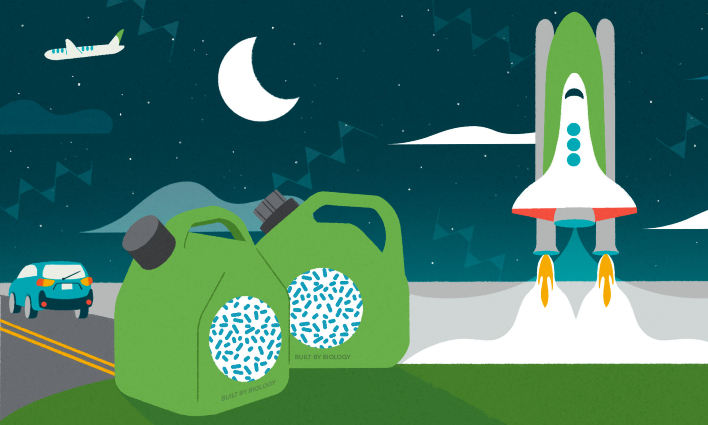Bacteria Powered Biofuel Breakthrough Could Lead To Cleaner Space Travel
Global warming has many wishing there was a cleaner manner of producing the petrol that feeds the different modes of transportation. A group of biofuel experts led by Lawrence Berkeley National Laboratory (Berkeley Lab) may have done just that with a particular bacteria. The fuel candidate molecules, called POP-FAMEs (polycyclopropanated fatty acid methyl esters), derives its energy potential from "the fundamental chemistry of their structures," according to a post on Berkeley Lab's website.
The polycyclopropanated molecules being utilized contain multiple triangle-shaped three-carbon rings that compel each carbon-carbon bond into a well defined 60-degree angle. This translates into more energy combustion than can be produced with the larger ring structures or carbon-carbon chains that are normally found in fuels. The structures also facilitate fuel molecules to pack tightly in a smaller volume, in turn increasing the mass and total energy of the fuel in any given tank.

Eric Sundstrom, an author on the paper describing POP fuel candidates published in the journal Joule, pointed out that petrochemicals give a "kind of soup of different molecules" which you don't have a lot of fine control over. However, that is what we have utilized for a long time and have designed all of our engines to run on.
"The larger consortium behind this work, Co-Optima, was funded to think about not just recreating the same fuels from biobased feedstocks, but how we can make new fuels with better properties," remarked Sundstrom. "The question that led to this is: 'What kinds of interesting structures can biology make that petrochemistry can't make?'"

The simulation data suggests that POP fuel candidates are safe and stable at room temperature and will contain an energy density value of more than 50 megajoules per liter after chemical processing. In comparison, regular gasoline has a value of 32 megajoules per liter, JetA, the most common jet fuel, and RP-1, a popular kerosene-based rocket fuel, have around 35.
The scientists are continuing to work toward increasing the bacteria's production efficiency even further to generate enough for combustion testing. "We're working on tuning the chain length to target specific applications," indicated Sundstrom. "Longer chain fuels would be solids, well-suited to certain rocket fuel applications, shorter chains might be better for jet fuel, and in the middle might be a diesel-alternative molecule."
Top Image Credit: NASA/Boeing


